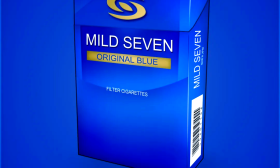The Invisible Threat: How Secondhand Smoke Endangers Bar Patrons
For many, a night out at a bar is a quintessential social experience—a place to unwind, connect with friends, and enjoy a drink. However, lurking within the convivial atmosphere of many establishments, particularly those in regions with lax smoking laws, is an invisible and dangerous hazard: secondhand smoke. Often dismissed as a mere nuisance, the scientific consensus is unequivocal: exposure to secondhand smoke in enclosed spaces like bars poses a severe and immediate health risk to patrons and workers alike, making it a critical public health issue that demands attention and action.
What is Secondhand Smoke and Why is it So Dangerous?
Secondhand smoke, also known as environmental tobacco smoke (ETS), is not merely the smoke exhaled by a smoker. It is a complex, toxic mixture of two forms of smoke: mainstream smoke (the smoke exhaled by a smoker) and, more dangerously, sidestream smoke (the smoke that drifts from the burning end of a cigarette, cigar, or pipe). Sidestream smoke is generated at lower temperatures and contains higher concentrations of many carcinogens and toxic agents than mainstream smoke.
There is no safe level of exposure. This statement, endorsed by leading health organizations like the World Health Organization (WHO) and the U.S. Surgeon General, is the cornerstone of understanding its danger. Secondhand smoke contains over 7,000 chemicals, hundreds of which are toxic, and about 70 can cause cancer. Key culprits include:
- Nicotine: The addictive substance that also affects heart rate.
- Carbon Monoxide: A poisonous gas that reduces the blood’s ability to carry oxygen.
- Formaldehyde: A known human carcinogen.
- Benzene: A chemical linked to leukemia.
- Ammonia: An irritant that affects the respiratory system.
In the enclosed, often poorly ventilated space of a bar, these chemicals do not simply dissipate. They accumulate, creating a concentrated toxic cloud that every person inside involuntarily inhales.
Immediate and Long-Term Health Effects on Patrons
The impact of a single night out in a smoky bar can be both immediate and, with repeated exposure, long-lasting.
Immediate (Short-Term) Effects
Even brief exposure can trigger adverse health reactions. Non-smoking patrons may leave a smoky bar experiencing:

- Eye, Nose, and Throat Irritation: Burning eyes, a runny nose, and a sore throat are common complaints.
- Respiratory Issues: Coughing, wheezing, and chest tightness are frequent, especially in individuals with respiratory conditions like asthma. For asthmatics, exposure can precipitate a severe asthma attack.
- Cardiovascular Stress: Exposure to secondhand smoke has an immediate detrimental effect on the cardiovascular system. It can reduce blood flow to the heart, increase heart rate, and contribute to the hardening of arteries almost immediately, elevating the risk of a heart attack—even for someone with no prior heart condition.
Long-Term Effects
For bar staff, this exposure is a daily occupational hazard. For regular patrons, the cumulative effect of frequenting smoky venues is profoundly concerning. Long-term exposure significantly increases the risk of developing:
- Lung Cancer: Non-smokers exposed to secondhand smoke at home or work increase their risk of developing lung cancer by 20–30%.
- Heart Disease: It is estimated that exposure to secondhand smoke causes approximately 34,000 premature deaths from heart disease annually among non-smokers in the United States alone. It damages blood vessels, interferes with circulation, and increases the risk of blood clots.
- Stroke: The risk of stroke is increased by 20–30% for non-smokers living in smoky environments.
- Respiratory Diseases: Chronic exposure can lead to the development of chronic obstructive pulmonary disease (COPD), including chronic bronchitis and emphysema.
The Failure of Ventilation and Designated Areas
A common argument against comprehensive smoking bans is that modern ventilation systems or designated smoking areas can mitigate the risk. This is a dangerous misconception. While ventilation can reduce the smell and visible haze of smoke, it cannot eliminate the exposure to toxic particulates and gases.
Studies have consistently shown that even the most advanced air filtration systems cannot reduce the levels of harmful chemicals to a safe standard. Toxic compounds like benzene and formaldehyde remain suspended in the air and cling to surfaces, creating a residue known as thirdhand smoke, which can continue to pose risks long after the cigarette is extinguished. Designated smoking areas within the same building are equally ineffective, as smoke inevitably drifts into non-smoking sections through doors, HVAC systems, and on clothing.
The Economic and Social Imperative for Smoke-Free Laws
Opponents of smoke-free laws often cite fears of economic downturn for bars and restaurants. However, a vast body of economic research has debunked this myth. Numerous studies across cities, states, and countries that have implemented comprehensive smoke-free laws show that these policies have no negative impact on hospitality sales or employment. In many cases, business improves as establishments become more attractive to the vast majority of the population who do not smoke.
Furthermore, smoke-free policies create a safer working environment. Bar employees—waitstaff, bartenders, musicians—are effectively subjected to a full shift of intense secondhand smoke exposure. Protecting their health is not just a ethical obligation but also a practical one, potentially reducing employer healthcare costs and employee sick days.
Conclusion: The Right to Breathe Clean Air
The choice to smoke is a personal one, but it ceases to be personal when the consequences are forced upon others. Patrons visiting a bar for a social experience have a right to expect that they will not be subjected to a known carcinogen. The evidence is clear, overwhelming, and beyond scientific doubt: secondhand smoke in bars is a serious health hazard with no viable halfway solutions.
The most effective and only way to fully protect bar patrons and staff is through the implementation and enforcement of comprehensive smoke-free air laws that prohibit smoking in all indoor areas of hospitality venues. It is a necessary step to ensure that a night of entertainment does not come at the cost of long-term health, safeguarding everyone's right to breathe clean, smoke-free air.











